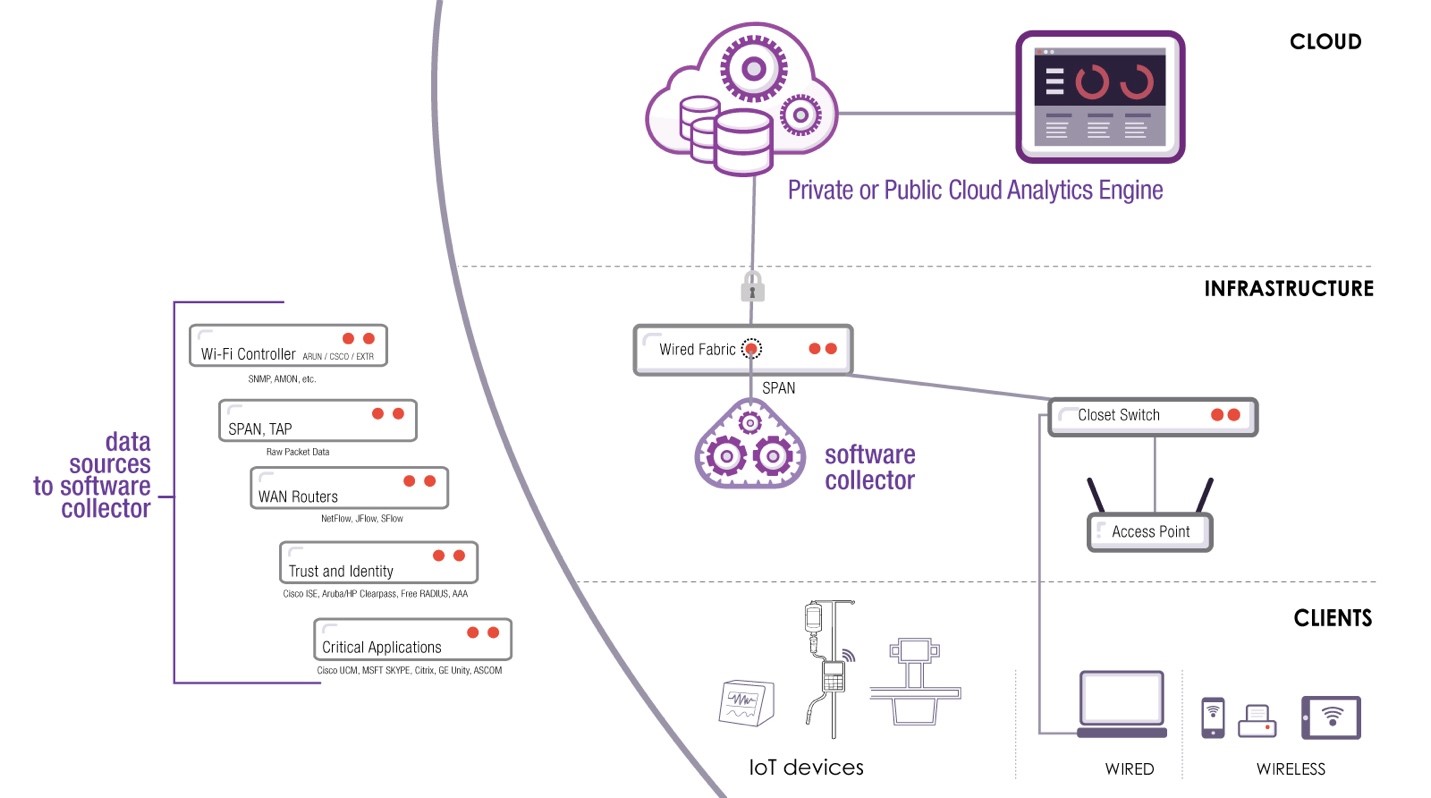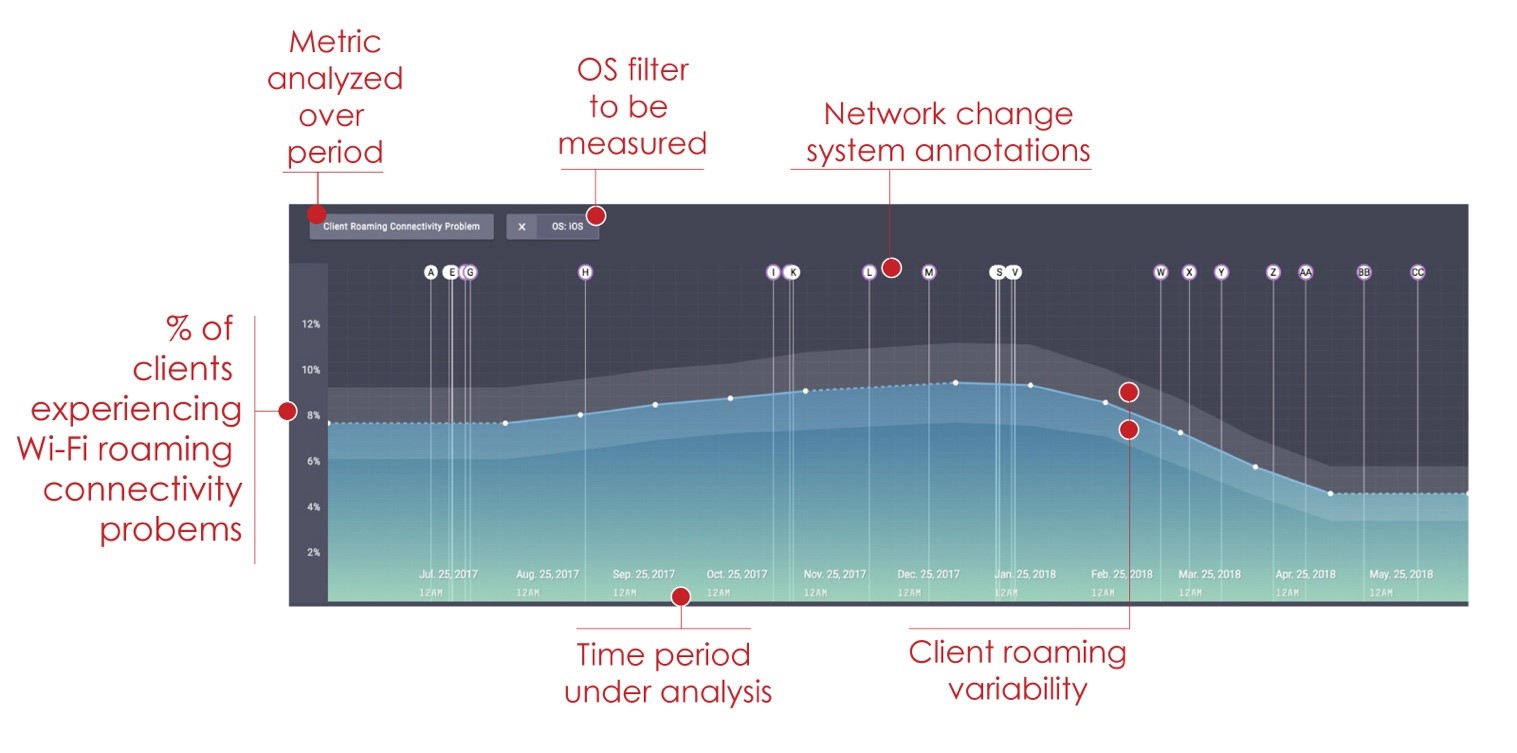Recent technology advances in big data network analytics are helping enterprises to get a grip on the real payoff and performance of Wi-Fi for users.
Companies of all shapes and sizes have become utterly dependent on Wi-Fi to keep users connected and productive. If they can’t connect, Wi-Fi almost always unfairly takes the brunt of the blame, begging the need for greater visibility and more comprehensive controls.
As enterprises continue to mull over migrating to faster Wi-Fi 6 technology, better analytics will be needed more than ever to better understand if Wi-Fi is delivering the promised productivity and the best possible return on what has become an expensive technology investment.
Network nuances
Because Wi-Fi deals with nuanced RF issues such as signal attenuation, airtime utilization, co-channel interference and other invisible challenges, it has become a source of frustration for network and IT staff that must deal with a myriad of different Wi-Fi mobile devices and an ever-changing RF environment. What’s more, Wi-Fi is inextricably linked to the wired network to perform properly.
After users associate with a wireless access point they must, among other things, authenticate to the network, obtain an IP address and resolve domain names to reach their desired application. A problem with any of these client transactions jeopardizes user connectivity and performance.
Regardless of the problem, unbeknownst users simply complain that “the Wi-Fi network is horrible.” This drives IT staff crazy, forcing them to triage problems by scouring through volumes of network log data and various vendors systems to pinpoint the root cause of the problem.
While many tools exist today to troubleshoot Wi-Fi, they don’t tell the entire story or provide the complete context necessary for network operations to get to the bottom of issues. Here’s a case in point.
If users can’t connect to Office 365 in building 8 between 2 and 4 p.m., IT staff must determine if the problem was with Wi-Fi, an authentication issue, a DNS server response, obtaining an IP address from DHCP, a WAN link utilization bottleneck or simply an application performance problem. This means collecting massive amounts of data from disparate systems, comparing and correlating it to just find and fix the glitch. Such a task can take hours, days or even weeks as IT staff simply aren’t data scientists.
Enter AI and big data analytics
Recent advances in big data network analytics that employ artificial intelligence (AI) and machine learning technologies are now helping ease the IT pain.
New vendor-agnostic analytics technology within corporate access networks use sophisticated software to automatically collect, analyze and correlate huge amounts of client, network and applications data to figure out when and why user problems are happening.
This obviates the need for manual data analysis or having to purchase, deploy and be trained on different vendor-specific management systems that only provide a partial view of a specific layer or part of the network.
How it all works
Data packets from the wired network are spanned to a software collector that passively sits off a core or intermediate switch constantly ingesting network, client and application traffic with no impact to the existing network architecture. This single collector also communicates directly with vendor WLAN controllers, network DNS, DHCP, AAA servers, WAN routers and application servers – analyzing every client network transaction to baseline behavior and identifying abnormal behavior.
In other words, an intelligent software machine is doing what no network staff can. By constantly staring 24 hours a day at network traffic, complex algorithms can quickly analyze if something is going wrong and determine the root cause of any potential problems across the stack.
Consequently true Wi-Fi client behavior, based on the actual user experience, is not merely analyzed based on RF dimensions, such as channel utilization, interference and signal strength but also with respect to link layer packet retransmissions, authentication transactions, DNS and DHCP response times as well as WAN bottlenecks and slow application performance.

How vendor-agnostic next gen big data network analytics is deployed. Image credit: Nyansa.
The data is then analyzed to develop historical performance baselines for every client transaction and sent to a cloud-based analytics engine. This is where network staff immediately sees actionable trends and insights presented in plain English while understanding what normal behavior for every portion of the access network from the perspective of the client using actual live data. When there’s a deviation from the baseline, or normal behavior, IT staff is automatically alerted with the root cause as well as with recommended remediations to fix the problem.

New Big Data Wi-Fi analytics platforms baseline myriad dimensions of Wi-Fi user performance before. Image credit: Nyansa.
Another big benefit of these new platforms is the ability to quantify the impact of network or configuration changes on the actual network performance experience by users.
For example, if network staff upgrades the wireless LAN controller code, changes Wi-Fi channel assignments or makes some other alteration to the wired or wireless network, the system automatically flags the change on the baseline. This allows network operations to see if any given change improved, degraded or had no quantifiable impact on users’ network performance.
Recovering lost user productivity
Because these new analytics systems analyze every client transaction in real time, they are uniquely able to determine and track the amount of lost client hours of connectivity related to any network issue. This lets IT staff prioritize the most important network problems to fix first that will recover the greatest amount of lost user productivity caused by bad Wi-Fi performance or some network problem across the full stack.
With the marriage of big data network analytics, AI and ML technologies, networkers are no longer burdened with blind spots. With a single source of truth in place that can be leveraged across all IT constituents, finger pointing is effectively eliminated. Meanwhile network operations are much better positioned to save time and money, find and fix problems faster, justify infrastructure change and determine the return on investment of Wi-Fi and other essential network technologies.




